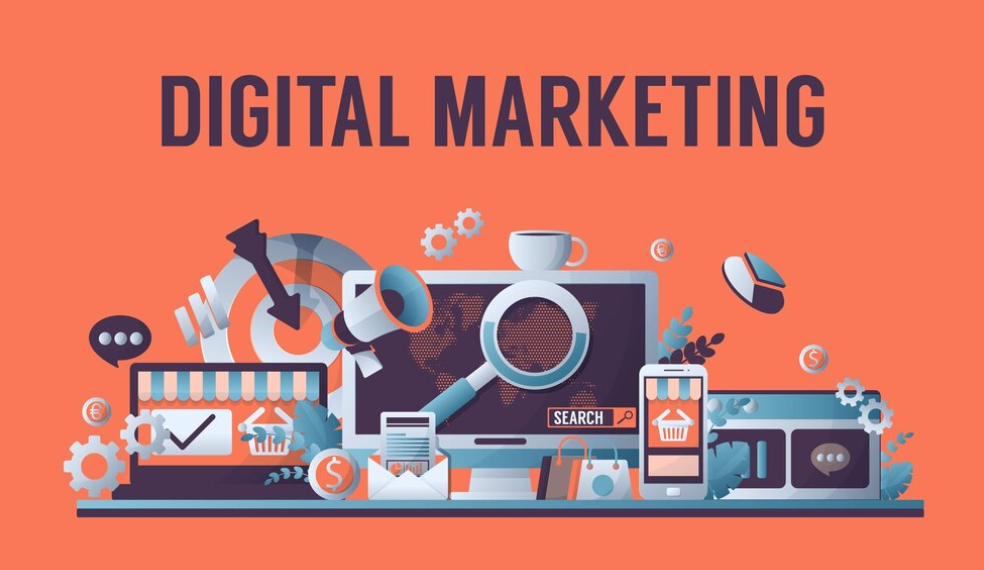
Digital Marketing is the best strategy to learn about the potential of marketing in any sort of a business. It is useful to consider the goals of consumer communication that must be addressed and understood.
Today’s digital marketing strategies involve more sophisticated customized engagements than emails and websites. For this reason, comprehending the 5 D’s of digital marketing is a critical factor towards getting value out of your online marketing efforts.
Digital marketing can be described as a type of advertising that uses technology devices.This will increase customer loyalty more effectively and continuously.
The 5 D’s of digital marketing describes how customers connect with brands and the different methods that businesses can communicate with and gain insights from their clientele.
This effective technology broadens the marketplace, offers comfort and precise segmentation, makes evaluation and tracking faster and easier, and makes it possible to gather relevant data efficiently.
The 5 D’s of Digital Marketing
The 5 D’s of digital marketing fosters explosive business consumer interactions & hence encourages the creation & execution of healthier business strategies. Let’s discuss about each in detail:
1. Digital devices
Potential clients can simply access all digital services with advanced broadband connections, also referred to as digital gadgets. Social media platforms like computers, tablets, and mobile phones are today’s business channel of communication to their audiences.
As new technologies emerge, marketers can interact with the audiences in many ways. Businesses can usually use laptops, PCs, tablets, or cell phones for interacting with their target audience.
2. Digital Platform
The creation of new technologies and the introduction of fresh digital marketing techniques allows businesses to select from the broadest range of digital marketing strategies that can cover a greater percentage of the total digital media spectrum. Study the market and understand its needs regarding your product.
On such sites, you can advertise the goods and general business profile. You have to run ads to make people aware about what you are selling. Social media platforms are the best means to interact with the targeted audience.
3. Digital Media
Following that, a range of electronic media are incorporated into web-based systems and digital devices. It determines how you interact with the target audience. Your prospective customer base expands dramatically as information circulates about your organization and its products.
Digital media has a broad network. For example, optimizing your brand’s visibility in search engine results pages (SERPs) can draw in customers by making your brand the top result.
Using mobile apps, especially ones designed for online shopping (e-commerce), can increase your sales. Additionally, you may use chat and email apps to give it a more customized feel.
4. Digital data
Digital data is the fourth element of e-marketing and is the outcome of the first three Ds. It has all the details you need on your potential customers to persuade them to buy from you or find out more about your business. It’s important to remember that some consumer information cannot lawfully be disclosed.
Consequently, not all data is displayed. As a result, profile data only includes data that the general public has provided and accepted. Consumers stand to gain from an analysis of digital data-driven trends and buying patterns.
5. Digital Technologies
To better connect your desired audience with your client services, consider the final piece of digital marketing as a cake frosting. Since the client controls the brand, they must use the newest technologies to attract potential customers.
For example, customers can display advertisements for their goods in-store booths. For companies to use effective publicity tools, they have to employ innovative skills to attract the necessary attention of the target market.
Conclusion
A practical method of marketing in the twenty-first century is utilizing highly effective Internet tools. This makes it possible for us to stay up to date with GCC-wide digital transformation projects. A wise move in the current competitive environment is to become a specialist in 5 D’s of digital marketing while optimizing benefits.
At worst, the promotional plan may fail if you don’t understand the five dimensions of digital marketing. Use electronic technologies to create engaging experiences and increase the efficacy of your marketing campaigns.
Frequently Asked Questions (FAQs)
Q1: Can the 5 D’s be Useful for Boosting Customer Engagement?
The answer is yes, this is because they allow brands to create fully personalized marketing campaigns which ultimately results in increased customer engagement and satisfaction. Both these are the primary goals of digital marketing…right?
Q2: Are the 5 D’s of Digital Marketing Applicable to all Industries?
Absolutely yes, the 5 D’s of digital marketing are highly versatile and adaptable, helping businesses of all types/niches to elevate their campaigns for maximum success.
Q3: What is SEO in Digital Marketing?
To get your website to feature at the top of a page of results generated in response to a keyword search term is known as SEO.
Q4: How can People Have a Better Grasp of the Five D’s of Digital Marketing?
People who want to learn more about the 5 D’s might look into the digital marketing courses that are available online through different educational organizations.
These courses help in the advancement of the capacities required to effectively explore the ever-changing scene of computerized promoting and execute the 5 D’s for successful campaigns.
Q5: Why is it Important for Business to Understand the 5 D’s ?
The 5 D’s are essential for companies because they offer a comprehensive strategy for navigating and prospering in the world of digital marketing.
Reaching a wider audience, increasing revenue, and successfully interacting with target audiences all depend on your ability to comprehend and make use of digital devices, platforms, media, data, and technology.